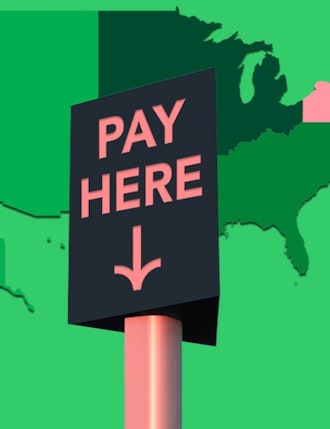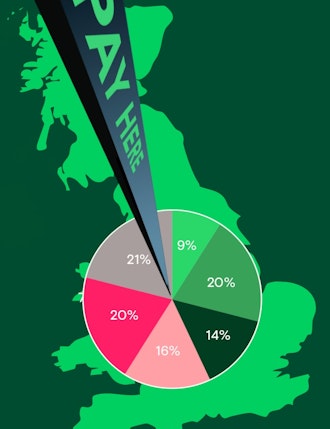The payments industry is the cornerstone of the global economy, and digitisation continues apace. Today we’re seeing continued innovation to ensure payments are secure, effective and fast. But are they sustainable? With around 78% of consumers stating that sustainability is important for their online transactions, it’s a key question to ask.
Here’s how the payments industry is working towards boosting payment sustainability in the future.
Going cashless to reduce CO2
Society’s previous overreliance on physical cash has always had an environmental impact. Manufacturing bank notes or minting new coins requires plenty of natural resources, as well as electricity and fuel. The transportation of physical cash also means more vehicles on the roads too.
In fact, according to a 2021 study in the US, based on the resources used and CO2 released, it costs the environment $0.26 for every $1 note produced. Simply by driving more towards a cashless society, we can dramatically reduce our environmental impact.
The trouble with cards
Yet, being cashless isn’t a pure environmental win. We have to consider credit and debit cards too. Payment cards are created from PVC (polyvinyl chloride) and require EMV chips to transmit data. These plastic cards don’t biodegrade and produce a lot of greenhouse gases.
So, how can the payments industry push towards a more sustainable future? By going even more digital. Alternative pure digital payment methods reduce the need to use cards at all. For example, virtual cards negate the need to produce new plastic cards – as well as the need to post them to customers. Paying through digital wallets uses pre-existing and ubiquitous infrastructure – smartphones and mobile networks – which will reduce the footprint of payments even further.
They both also reduce the need for paper receipts. According to statistics from the US, the annual production of receipts in the States alone requires 10 million trees and 250 million gallons of oil. Digital receipts are an easy and sustainable choice to make. Smartphones, as well as internet based technologies, reduce the need for paper receipts by allowing customers to receive and store digital receipts electronically through the wallet directly, email or app.
Green energy is needed to drive payment sustainability
Digital payments do also come with payment sustainability concerns. The processing of digital transactions relies heavily on cloud and mobile infrastructure powered by data centres that use a lot of energy. In fact three-quarters of the energy used by the payments industry comes from the processing of digital operations.
The solution for many lies in the use of renewable energy. According to the Netherlands National Bank, the payments industry could reduce its environmental impact by 44% simply by using renewable energy for data centres and payment terminals, alongside increasing the lifespan of cards already in existence.
Many companies in the payments industry – such as Mastercard – are also running initiatives to plant trees to offset their carbon emissions, as well as educating consumers about how to make sustainable purchasing decisions.
Making POS terminals green
When it comes to taking payments in the physical world, there are sustainable strides to be made too. We’re already seeing POS terminals being made from recycled plastic. Plus, the push to use SoftPOS terminals whereby merchants take payments on smartphones or other enabled devices again relies on existing technology and ubiquitous infrastructure.
The capability to round up payments at point-of-sale to give to charity can also make a huge difference to environmental charities.
Digital payments offer essential data and insights
As more consumers use digital payments, it drives the increase of available data across the payment ecosystem. This data can in turn act as a valuable resource for merchants, payment service providers (PSPs), ISVs and card issuers to offer helpful insights. These can then be used to optimise and evaluate processes to make better sustainable decisions. All organisations involved in the payment process can make steps towards reducing their carbon footprints.
For example, a retail business can use transaction data to analyse peak shopping hours and customer behaviour patterns. This information can help them adjust staffing schedules and reduce energy consumption during off-peak hours, contributing to a more sustainable operation.
Additionally, they could also track the environmental impact of shipping methods and make data-driven decisions to optimise delivery routes in a way that reduces emissions. In essence, transaction data provides valuable insights that enable businesses to align their operations with sustainability goals and make well-informed choices for a greener future.
The payment industry continues to innovate towards a more sustainable future. Strides have been made but there is still a long way to go. Discover more about Aevi and how our payment platform facilitates digital payments both in-person and online.
Interested in reading more around this subject? Here are some useful articles…













